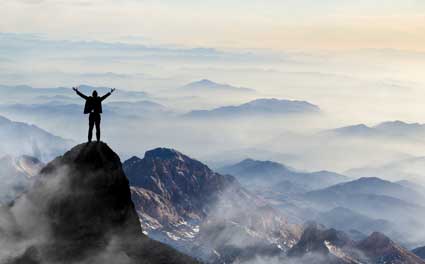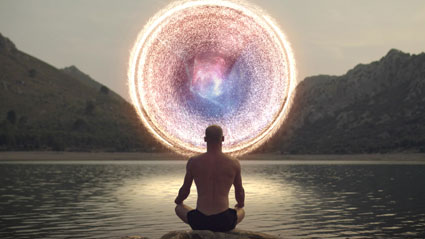City Traveling in Russia
MOSCOW
Introduction
Russia is home to some of the most beautiful cities in the world, and some of the oldest. Each offers a variety of things to do, landmarks and great works of architecture to see, as well as a wide variety of accommodations, foods, and entertainment. In this article, we will briefly cover four of Russia's largest and most visited cities. However, we urge students to explore multiple regions, cities, and towns throughout Russia, and if you plan to visit in the near future, visit not only some of her largest cities, but enjoy a slower pace of life in summer for smaller ones.
Moscow
Moscow is one of the most famous cities in Russia, founded in the middle 12th century. Begun as a council town, Moscow is surrounded by massive, deep, and thick forests. It is in Moscow that the country's identity formed. The city began as a fortress, then a small town, and then, by the 15th century, was considered the capital of Russia. Moscow is filled with dozens of amazing and beautiful architectural buildings, museums, and events.
The city itself is located between the Volga and the Oka rivers along the banks of the Moskva River. It is hot in the summertime and very cold in the wintertime, but offers a variety of beautiful attractions for visitors year-round. Some of the most interesting things to see in Moscow include:
- Red Square. Known as Krasnaia Ploshchad, Red Square is a famous open area surrounded by gorgeous Russian architecture and scenery. Red Square is huge, and Lenin's Tomb is found in the middle. Walk to the North Gate and you will see the National Historical Museum, with displays ranging from prehistoric times to the Russian Revolution.
- The Kremlin. The gold domes of the Kremlin are world famous, and as one of the oldest cities in the world, you will find displays of Russian artifacts, history, weaponry, and more, as well as beautiful churches standing here. You can spend hours visiting the Kremlin and not see everything.
- St. Basil's Cathedral and the Church of Christ the Savior. Both are extremely beautiful churches located just off Red Square. St. Basil's Cathedral is easily recognizable by its architecture and beautiful domes. It has withstood the test of time including the rule of the tsars, going through two global wars, a civil war, and the rise and fall of communism. The interior murals and paintings are beautiful, and personify the Russian sense of culture and history.
Of course, there are many other places to see and visit in Moscow, including the State Tretyakov Gallery, Victory Park, Gorky Park (you can go ice skating there in the winter) and smaller venues such as the museum of famous Russian novelist Fyodor Dostoyevsky, as well as the Memorial Museum of Cosmonautics.
St. Petersburg, Russia offers visitors once-in-a-lifetime sites and adventures. From St. Isaac's Cathedral with its panoramic view of the city to Palace Square, visitors to St. Petersburg typically walk away with an awed and appreciative impression of one of the world's oldest cities.
Visit the Summer Gardens with its beautiful statues, or visit the Museum of Russian Political History for an eye opening adventure into the past. The Peterhof is one of the most grand estate palaces in the nation, and it is easy to see why that is with its elegant and extravagant opulence. The palace and its surrounding grounds offer testimony to the tsars of Russia, and its gardens (which seem to go on forever) are filled with golden statues, ceramics, and over one hundred fountains.
The State Hermitage Museum is also a visitor favorite and was founded by Catherine the Great. The museum (former residence of Russian emperors and empresses, as well as the Romanov court) is immense, and you can spend more than a day just strolling through the palace, the grand staircase, the halls, and of course, just watching the boats on the river Neva, right beside the museum. The Hermitage is located directly across the river from the Peterhof, so if you can fit both into your sightseeing schedule, do so.
While you are in St. Petersburg, visit Domik Petra Pervogo or the cabin of Peter the Great. This simple, rustic home is nestled along the banks of the Neva River, hidden in a thin cluster of trees right in the middle of St. Petersburg. It is the oldest standing structure in St. Petersburg; a three-room log cabin that served as home to Peter the Great.
Other interesting sites to see include the monument to the heroic defenders of Leningrad, The Savior on Spilled Blood Cathedral and Museum and the beautiful Smolny Cathedral. For those looking for more excitement, check out the Metro, an exciting night club in downtown St. Petersburg.
Kursk is located just about in the center of Russia, and offers historical significance as the location of one of the largest and most fierce armored tank battles in history. The city also served as the "high tide" mark of the fight between the Russians and Germans during the Second World War.
The city itself was founded as early as the fourth century B.C., and records date back to its existence in 1032. If you happen to be traveling between eastern and western Russia and pass through Kursk, stop and get off for a few hours. There are plenty of things to see and do here. The Upper Church of the Trinity Monastery is one of the oldest buildings in the city and has been in existence since the reign of Peter the Great.
Kursk is also home to several modern and well respected universities, but most travelers venture toward the city for it is of rich historical significance and has memorials that commemorate the Battle of Kursk. Today, visitors can still see World War II era tanks on display, commemorating the site where over 6,000 tanks and troops from German and Russian forces clashed in July and August of 1943. Kursk serves as the site of the first successful battle victory of the Soviet summer offensive and is still remembered and commemorated today.
Today, the ancient city of Stalingrad is now known as Volgograd, also a famous historical city in terms of World War II history. The city stands along the banks of the Volga River and became famous as a symbol of resistance against the Third Reich during the Battle of Stalingrad, which began in late August 1942. Nearly one million Russian patriots died in that battle, something that the city has never forgotten.
The city was named Stalingrad in 1925 after Joseph Stalin, and was rewarded for its heroes in 1945 by King George VI of Great Britain. He gave the citizens of the city of beautiful 'Sword of Stalingrad' to commemorate and recognize their bravery. The city changed its name from Stalingrad to Volgograd or Volga City in 1961 under the direction of Nikita Khrushchev.
The above mentioned are just a few of the most populated cities in Russia, but whether you are traveling from east to west or west to east, do not forget cities and towns along the way, including Sochi, Rostov-on-Don, Kaliningrad, and dozens of others.
Conclusion
Russia is a beautiful country, and each of her cities finds a way to commemorate, remember, and honor her past while stepping into the future. Whether you are visiting Moscow, St. Petersburg, Nizhny Novgorod or Vladivostok, try to stop and take a good look around. You will find a wealth of history, culture, and heritage in all of Russia's buildings, in her people, and in her foods.
The Former U.S.S.R. and Today's Russia
Introduction
Russia, known as the former U.S.S.R. (Union of Soviet Socialist Republics), has a rich history in its tsars, leaders, its military, and its progression into 21st century society. Russia has overcome centuries of struggle, first as a totalitarian and dictatorial state to the Russia seen and experienced today, where freedoms and rights have become more prevalent. Russia has indeed loosened its iron grip on much of its former territories, endured a Cold War, and experienced "glasnost" (to varying degrees of success).
In this section, we will offer students a brief glimpse into formerly known U.S.S.R. society, briefly profile some of its leaders, and offer a brief comparison of where it has been and where it is headed.
Before the Rise of the Iron Curtain
For generations, Russia and its people were hidden behind a literal Iron Curtain which effectively locked Russians in and kept out foreigners. For generations, tsars ruled Russia with an iron fist. Some were admired, even loved, and some were hated.
When it comes to Russian tsars, nearly everyone has heard the name Ivan the Terrible. While he succeeded to the throne as a toddler, he had himself crowned at the age of 16. He ruled from 1533 to 1584 and literally propelled Russia into a feared, if not respected, regional power. He did not get his nickname for being a nice person. Ivan the Terrible was known as a volatile individual, extremely smart and religious, but believed to have suffered from some type of mental illness. He is known for his bouts of violence, cruelty, paranoia, and mistrust.
He extended the control of Russian rule from the Ural Mountains in the east and to the Caspian Sea to the south. His main goal during his reign was to expand the Russian Empire. Ivan the Terrible commissioned St. Basil's Cathedral, which sits along one edge of Red Square.
Peter the Great was also one of Russia's tsars, and the differences between him and Ivan the Terrible are numerous. Peter the Great ruled from 1682 to 1725. He, like Ivan the Terrible, continued to expand the Russian Empire and turned it into a strong, powerful country. He is believed to have had a hand in encouraging a cultural revolution that promoted modern, scientific thinking that was more European in nature than those of his ancestors were. However, Peter the Great was no pushover, and dealt with internal rebellion quickly and severely.
In 1721, Peter the Great was officially graced with the title, "Emperor of all Russia." During his reign, he reformed the Russian Orthodox Church and abolished land and household taxes, but he introduced new types of taxes that were used to improve St. Petersburg.
From ancient Russia to the time of the Romanovs, power in Russia lay in the hands of nobility. However, beginning with the reign of Ivan the Terrible, Russian tsars gradually became the power players, rather than nobility. In most regions, the nobility cooperated hand in hand with demands of the tsars, as long as they got what they wanted out of the bargain.
Gradually, over the years, autocratic rulers such as the tsars, the nobles that they had in their pockets, and their power, grated on the nerves ofthe common people, and by the 1800s, rumblings of discontent swept through the nation. What followed were years of rebellions, with various factions fighting against tsarist rule.
By 1900, Russia had expanded her empire from Eastern Europe to the borders of China. Nevertheless, reforms picked up momentum and discontent continued to sweep through the land. In 1912, Social Democrats divided into two different factions, radical Bolsheviks and moderate Mensheviks.
In 1914, Russia was propelled into the First World War on its western front. For years, she suffered crippling food shortages, loss of human life, and near economic collapse. By 1917, the Bolshevik faction, headed byVladimir Ilyich Lenin, had overrun the Winter Palace and deposed the current government.
However, even the Bolshevik regime was not stable, and following the conclusion of the First World War, civil war and rebellion broke out within Russian regions until in 1920, when the Bolsheviks seemed to come out on top. Thus, began the true era of Soviet rule. Lenin's new economic policy helped some and focused on rebuilding the infrastructure of the devastated country.
Lenin died in 1924, precipitating yet another struggle for control and power in the communist country. Joseph Stalin eventually emerged as its leader. He immediately disavowed Lenin's efforts and created a true communist regime with state run farms, collectivization, tight control, and radical power plays. Under Stalin, religion was suppressed, churches were destroyed, and all opposition to Stalin and his policies were wiped out.
By 1940, the Soviet Union was an extremely regulated country that lived under the rule of discipline, Stalin's thumb. Stalin signed a nonaggression pact with Germany in 1939, but German Chancellor Adolf Hitler was not known to follow the rules, or keep promises. Germany attacked the Soviet Union in June of 1941, overrunning much of western Soviet territory, surrounding St. Petersburg, and successfully advancing to within several hundred miles of Moscow.
At the cost of more than 20 million lives, Soviet Union soldiers pushed Hitler out of their country and helped bring an end to the Second World War. At the end of the Second World War, another war began, one filled with the fear of attacks and counterattacks with nuclear weapons. The era was nicknamed The Cold War.
From 1945, the Soviet Union focused its energies and resources on military power and projects, in developing technology, and a contest of sorts to conquer outer space, which did nothing to help the everyday life or lifestyle of common Russian citizens. Joseph Stalin remained in power in Russia until 1953, and Nikita Khrushchev stepped up to take his place.
Under Nikita Khrushchev, Russia enjoyed relaxed degrees of political freedom and control, an enhanced quality of life, and a period in which many of the citizens of Russia were able to relax and enjoy their existence once again. Unfortunately, Khrushchev did not remain in power for long, and in 1964, he was ousted.
Following Khrushchev's leadership, General Secretary of the Communist Party, Leonid Brezhnev, took control in the early 1970s. He focused on stabilizing Russia, although he did promote an extremely aggressive foreign policy. As a result, Russia literally stagnated for over a decade. The economy was in shambles, and people once again began to despair. Brezhnev died in 1982, and he was succeeded by a former head of the KGB, Yuri Andropov, followed by Konstantin Cherenkov, neither of whom did much to help Russia obtain any degree of stability.
By 1985, Mikhail Gorbachev had become the General Secretary, and he proposed two new foundations upon which the Soviet Union could rely, openness (glasnost) and restructuring (Perestroika). Unfortunately, a nuclear accident at Chernobyl hobbled Gorbachev's attempt at glasnost almost from the beginning. The reactor explosion had been kept secret for many days, allowing radioactive material to spread throughout the country, causing extensive death and destruction. It was only after the accident at Chernobyl that Gorbachev promoted and demanded that all controls on media reporting be removed.
Today, a tricolored Russian flag flies over the Kremlin, replacing the white sickle on red background that many generations of Russians and world inhabitants had grown to fear.














